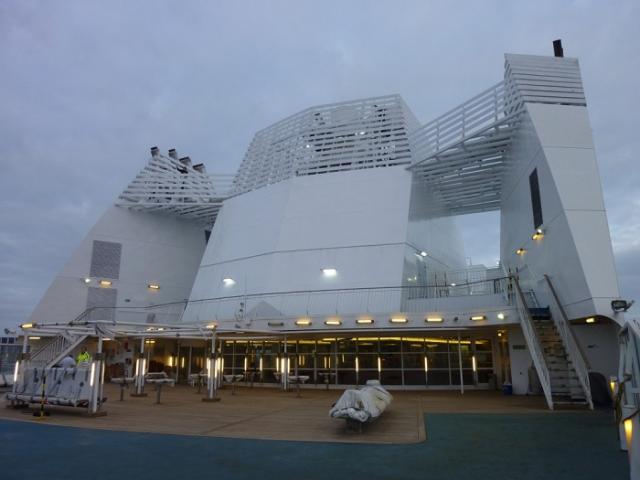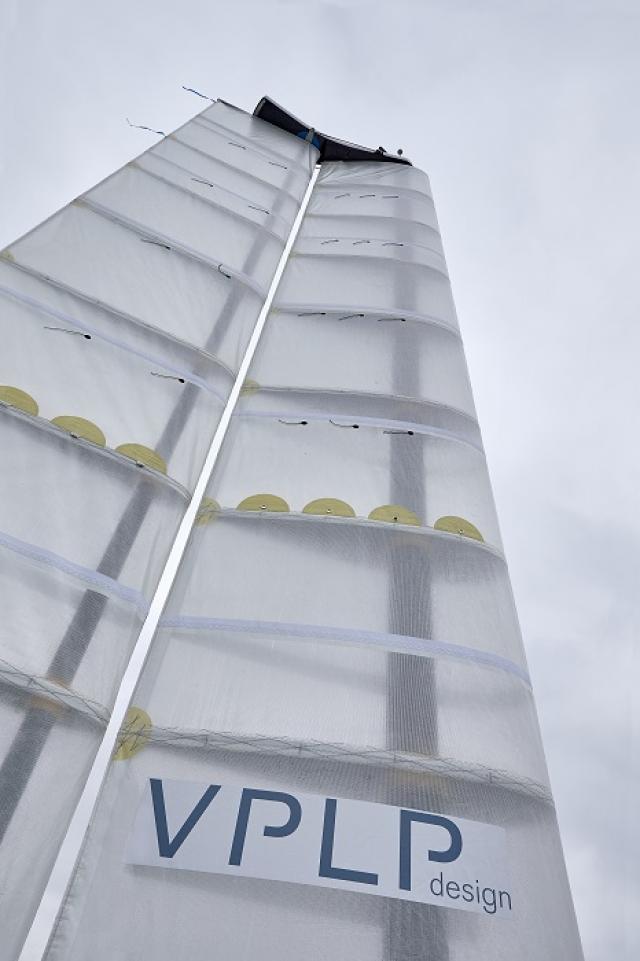8 December 2017
Renewable energy
8 December 2017
Renewable energy
Oceanwings®, the smart wingsail for ship propulsion conceived by VPLP, will be jointly developed and manufactured at CNIM’s industrial plant at Seyne-sur-Mer, France

CNIM and French naval architecture firm VPLP design have announced the signing of a technological partnership agreement for the design and manufacture of the Oceanwings® propulsion system. The aim of this partnership is to create an innovative product on the basis of a concept imagined and tested by VPLP design.
Targeting the super-yachting, maritime transport and nautical sports markets, Oceanwings® consists of a two-element wingsail which is entirely automated, furlable* and reefable. Usable in hybrid mode together with a propeller propulsion system, Oceanwings® offers considerable fuel savings and reduces greenhouse gas emissions.
VPLP has already built and tested a full-scale prototype (8 meters wide) which has been fitted on a 7-meter trimaran. The two partners will now develop industrial solutions to make this patented technology available to maritime professions and vessel owners.
*“Furlable” means that the area of the sail can be totally reduced. “Reefable” means that it can be partly reduced.
We have been working on the rigid wingsail concept since 2010 in partnership with teams taking part in international races such as the America’s Cup,
Marc van Peteghem, joint-founder of VPLP.
Photo credit: VPLP design
With Oceanwings®, we wanted to overcome the restrictions imposed by rigidity and, so, offer the possibility of reducing the area of this type of rigging, as is the case with conventional rigging. Backed by France’s environment and energy efficiency agency, ADEME, we developed a complete functional prototype. Our technical partnership with CNIM will now enable us to move on to the industrialized construction of these wingsails on the basis of a design-to-cost approach to make them an attractive proposition for all types of craft.
CNIM’s skills and industrial capabilities will be key to the success of the Oceanwings® project. With its high-level engineering expertise in business lines such as space, big science and defense, it has extensive experience in the design and manufacture of extremely large items.
CNIM also has complete mastery in composites technologies, including filament winding, automated spraying and autoclaving, that will be used to manufacture Oceanwings® wingsails on an industrial scale. Furthermore, CNIM’s history as a former shipbuilder along with its current business in designing innovative systems for the navy and marine-related industries provides the Group with a wealth of expertise in the maritime sector.
The CNIM Group has a lot of industrial expertise and a well-proven capacity for innovation, particularly in developing innovative craft for the maintenance of the offshore wind farms, not to mention high added-value equipment to cut the flue gas emission of the work boats as well as the passenger ships. Companies like Petrofac, Brittany Ferries and STX are CNIM regular customers,
says Philippe Lazare, Chief Executive of CNIM Industrial Systems.
Photo: Scrubbers supplied by LAB, a subsidiary of CNIM
We are also increasingly focusing on renewable energies and energy efficiency. The Oceanwings® smart wingsail, which can be used in hybrid mode to achieve fuel savings up to 30%, is therefore totally in line with our skills and objectives. We believe it offers a real propulsion solution for the future.
Photo: The Oceanwings® smart wingsail
According to a study* conducted for DG CLIMA (the European Commission’s Directorate-General for Climate Action), the world market potential for wind propulsion technologies could amount to between 3,700 and 10,700 systems installed on vessels such as bulkers, container ships and tankers by the year 2030. This use of wind propulsion systems could significantly reduce carbon emissions.
*https://publications.europa.eu/en/publication-detail/-/publication/7d4405d7-c81f-11e6-a6db-01aa75ed71a1/language-en , November 2016


